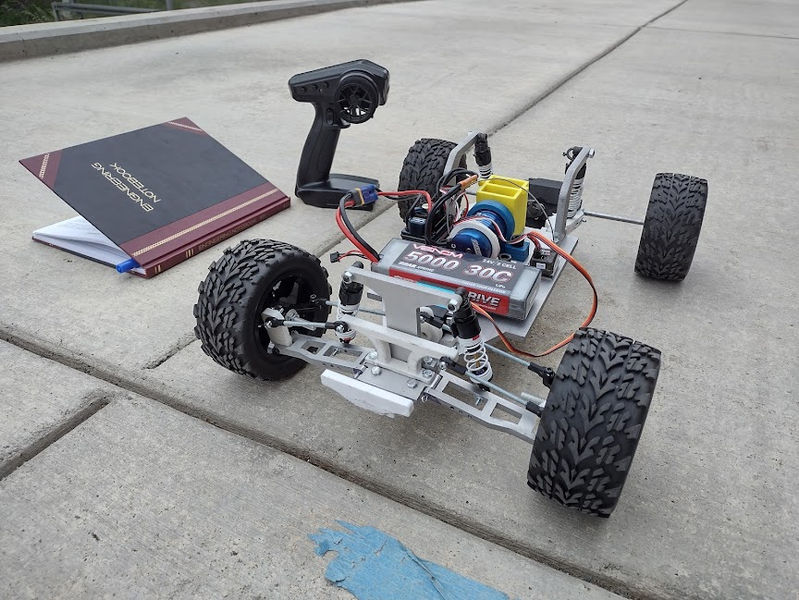Testing
The testing portion of the project is meant to determine whether or not the project met the requirement criteria the student created (which can be viewed by clicking here). The testing will take place in both the Hogue Interdisciplinary Lab and right outside of Hogue as there is plenty of flat and ideal ground conditions. The student will need to test the vehicle capabilities from top speed, to turn radius, to motor output and the student must have the proper tools to test if these requirements were met. Finally, the student must document the results of their testing to be turned in and displayed through hard data, video, and pictures to demonstrate the process and outcomes to determine if the vehicle met the student's requirements.
Testing Video
This video includes clips from all the testing ran, along with a short clip from the RC Baja competition. The turn radius test was run by turning the RC car into a laid out tape measure for each direction turning 180 degrees to calculate for turn radius, then 360 degrees to record turn deviation. The top speed test was run in a straight line with distances measured out to allow time for the car to accelerate to top speed and take the time it took the car to travel a given distance. Finally, the power output test was run by suspending the RC car where the tires were off the ground then running the car at full power then measuring Voltage and Current with a clamp multimeter.

Turn Radius Test
In the turn radius test the student set up a measuring tape of at least 20ft in length and set the outside edge of the front wheel against the measuring tape. The student then turned the wheels to max deflection towards the length of the measuring tape and ran the RC car as slow as possible to attain the smallest turn radius. The student then ran 3 tests in each direction for 180 degrees, then 3 more tests in each direction for 360 degrees to test deviation. The resulting data gave turn diameter in feet, turn radius is feet, deviation in feet, and turn angle in degrees.
Battery Output Test
For the battery output test, the RC car was suspended to allow the car to run at top output, while allowing to record data. The student used a clip multimeter to measure the magnetic field produced by the current when the car was running at full speed. The student then measured the voltage supplied to the motor, which was constant on every test. Finally, the student calculated Wattage and Torque similar to what was done in Analysis 1 and 2.


Top Speed Test
The RC car was run through a track, with 25 feet designated for the car to accelerate to top speed and 20 feet in which the car would be timed for top speed, with a total track length of 45 feet. Two students were needed to run this test, one to record data while the other drove the RC car. The time was only recorded for the 20 foot section, as that was when the car was at it's top speed. Top speed was calculated using the time and designated track length, then converted to mph to compare to the requirement.













